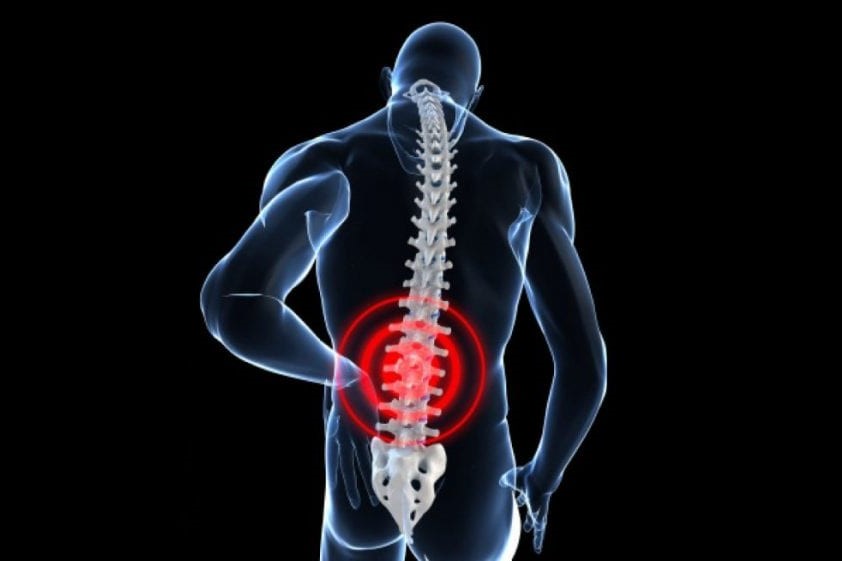
Pain and gate theory: why do we touch where it hurts?
The answer can be found in a theory (of the gate), postulated more than 50 years ago by Canadian psychologist Ronald Melzack and British neuroscientist Patrick David Wall, referred to as the “gate theory of pain control,” or more simply “gate theory”
Gate theory: what is pain?
“Pain” is, according to the official definition of the International Association for the Study of Pain, “an unpleasant sensory and emotional experience associated with harm to the body: actual or potential.”
It is a real alarm system, a signal sent by our body that informs us about injuries suffered or stimuli whose intensity is such that they are potentially harmful, so that we can take the necessary precautions in order to ensure the normal survival of the organism.
Individuals with “congenital insensitivity to pain,” a very rare disorder of the nervous system, live in a situation of constant danger as they are unable to perceive the existence of both internal and external pain.
Nociception and pain stimulus transmission
Nociception, or the perception of pain, arises from the activation of so-called nociceptors, pain-sensitive receptors.
They are able, being nerve endings, to conduct by means of fibers (also called axons) pain messages to spinal cord neurons, located in the dorsal horns of the spinal cord.
The medullary neurons in turn project the stimuli to areas of the brain such as the thalamus, from which further fibers depart that transmit the messages to the cerebral cortex, a region most important for pain awareness.
Gate theory
The gate (gate) of pain control is located in the dorsal horns of the spinal cord, where there are connections between C-type nerve fibers that depart from nociceptors and A-β-type nerve fibers that carry mechanical information, relating, for example, to compression, tickling, stretching, etc.
This area of connection, when properly stimulated, is able to reduce the intensity of pain that is felt.
In order for this to happen, nociceptive fibers and mechanical fibers must communicate with particular neurons that always reside in the spinal cord, i.e., interneurons, which transmit the information to the spinal cord neuron.
The interneurons examined release endogenous opioids, substances that act as inhibitory neurotransmitters because they decrease the intensity of the signal, and consequently the perceived pain.
Nociceptive fibers that synapse with the inhibitory interneuron have been shown to inhibit its action, while mechanical fibers stimulate its activity.
Gate theory, two different situations are possible:
CLOSED GATE: In the case where the A-β type mechanical fiber is active, the inhibitory interneuron will also be active, which will carry out its function, cancelling or reducing the transmission of the pain stimulus to the brain.
OPEN GATE: On the other hand, if the A-β-type mechanical fiber is not activated, the C-type nociceptive fiber will inhibit the inhibitory interneuron and thus the pain information will be clearly perceived.
From this it can be inferred that the simultaneous transmission of a pain stimulus and a non-pain stimulus attenuates the transmission of pain information, so the perceived pain will be reduced.
Simply put, yes, massaging the area of the body that is accidentally bumped decreases the sensation of pain.
Applications of the theory
The previously described principle applies to therapeutic messages and TENS therapy, which consists of electrical stimulation of the skin by means of external stimulation electrodes.
TENS therapy is effective in the treatment of osteo-articular, ligament and tendon disorders.
Bibliography
Kandel, E.R., Schwartz, J.H., Jessel, T.M. (2000). Principles of Neuroscience.
Carbone E., Cicirata F., Aicardi G. (2009). Physiology: from molecules to integrated systems.
Read Also:
Emergency Live Even More…Live: Download The New Free App Of Your Newspaper For IOS And Android
Chronic Pain, Causes And Remedies
Fibromyalgia: Where Are The Tender Points That Cause Pain On Palpation?
Fibromyalgia: The Importance Of A Diagnosis
Fibromyalgia: Symptoms, Causes, Treatment And Tender Points
Treating Pain With Oxygen Ozone Therapy
Cervicalgia: Why Do We Have Neck Pain?
The Causes Of Acute Low Back Pain
Cervical Stenosis: Symptoms, Causes, Diagnosis And Treatment
Cervical Collar In Trauma Patients In Emergency Medicine: When To Use It, Why It Is Important
Cervicalgia, What It Is Caused By And How To Deal With Neck Pain
Cervical Dizziness: How To Calm It Down With 7 Exercises
What Is Cervicalgia? The Importance Of Correct Posture At Work Or While Sleeping
Lumbago: What It Is And How To Treat It
Back Pain: The Importance Of Postural Rehabilitation



